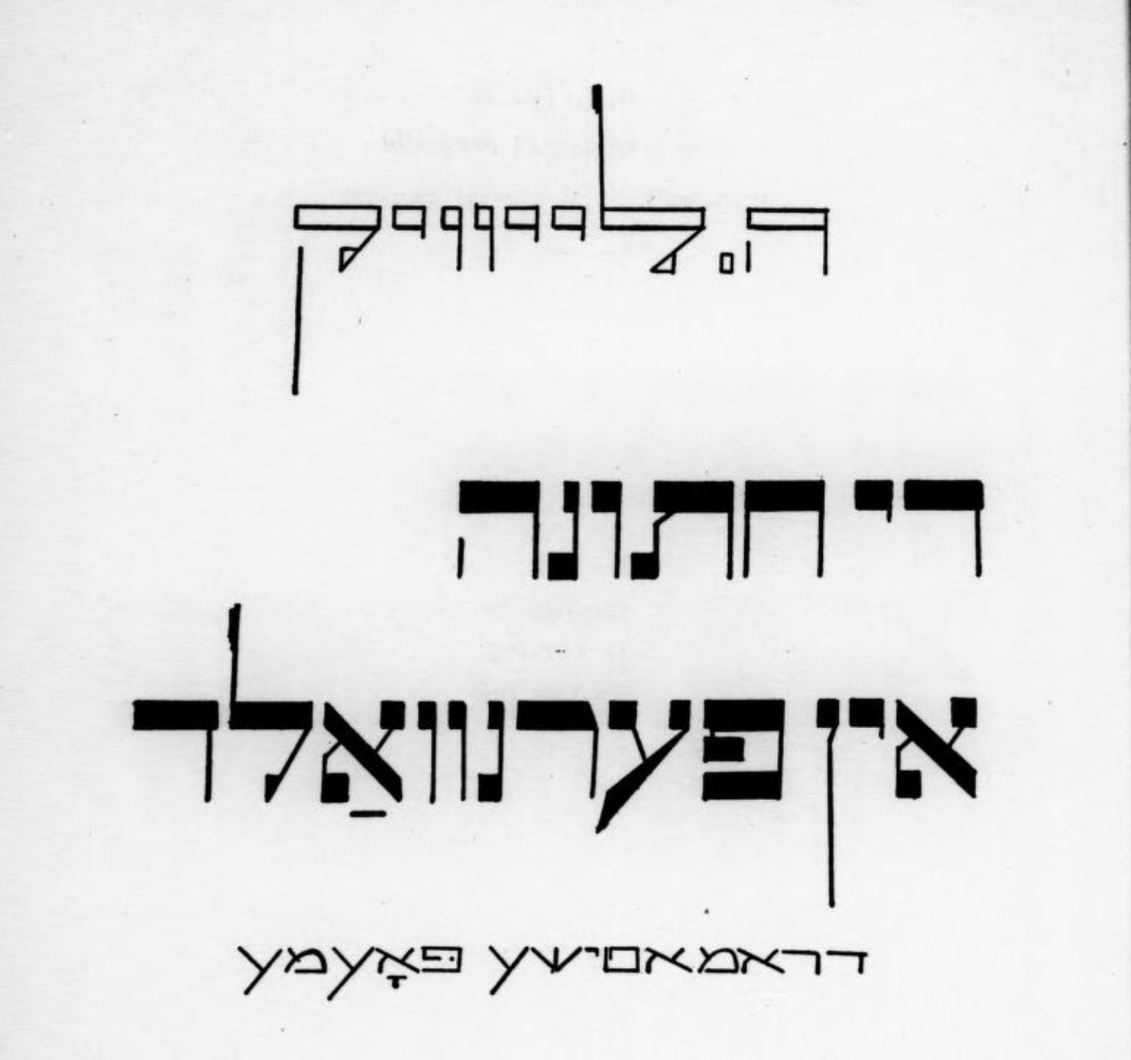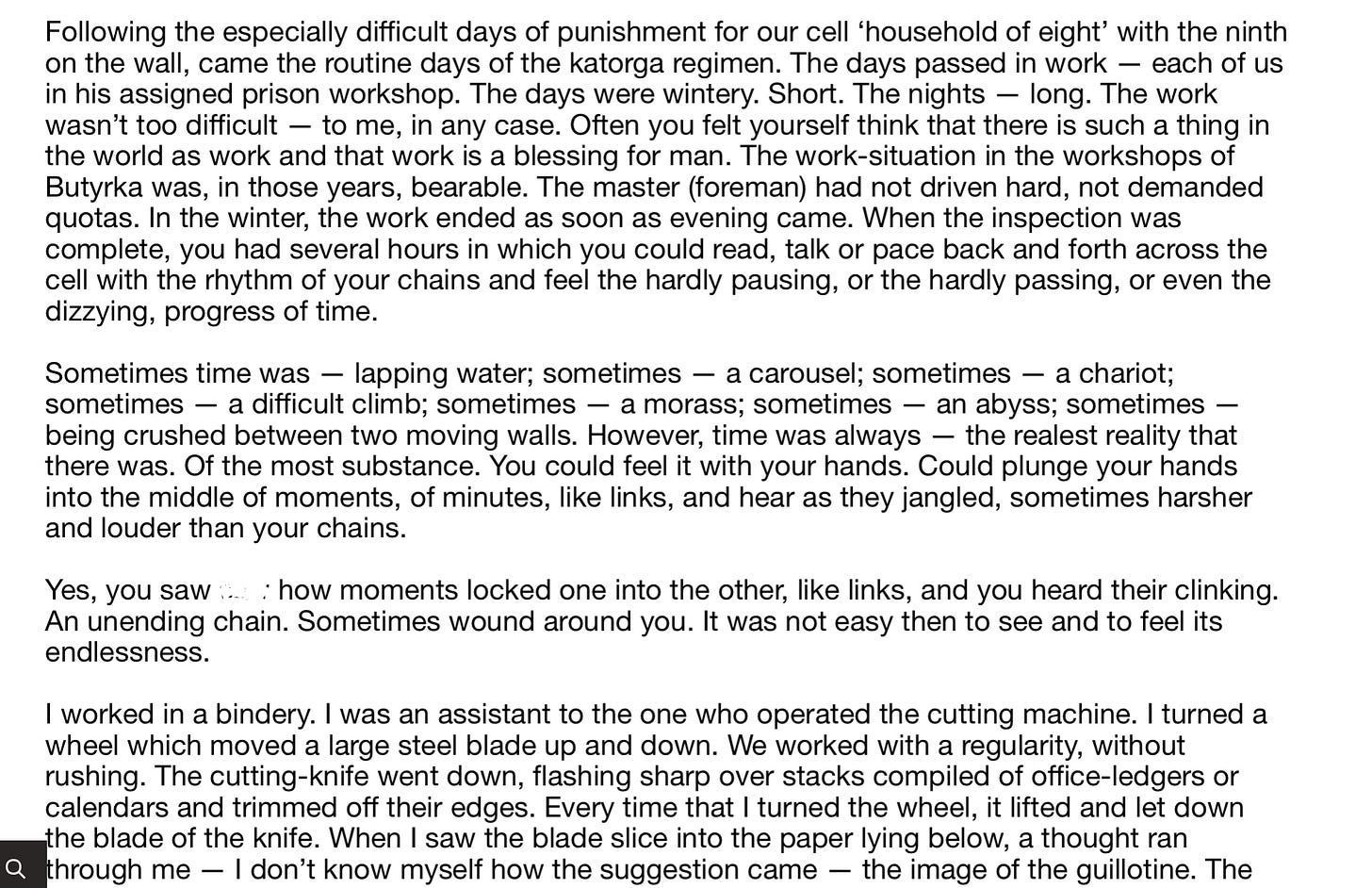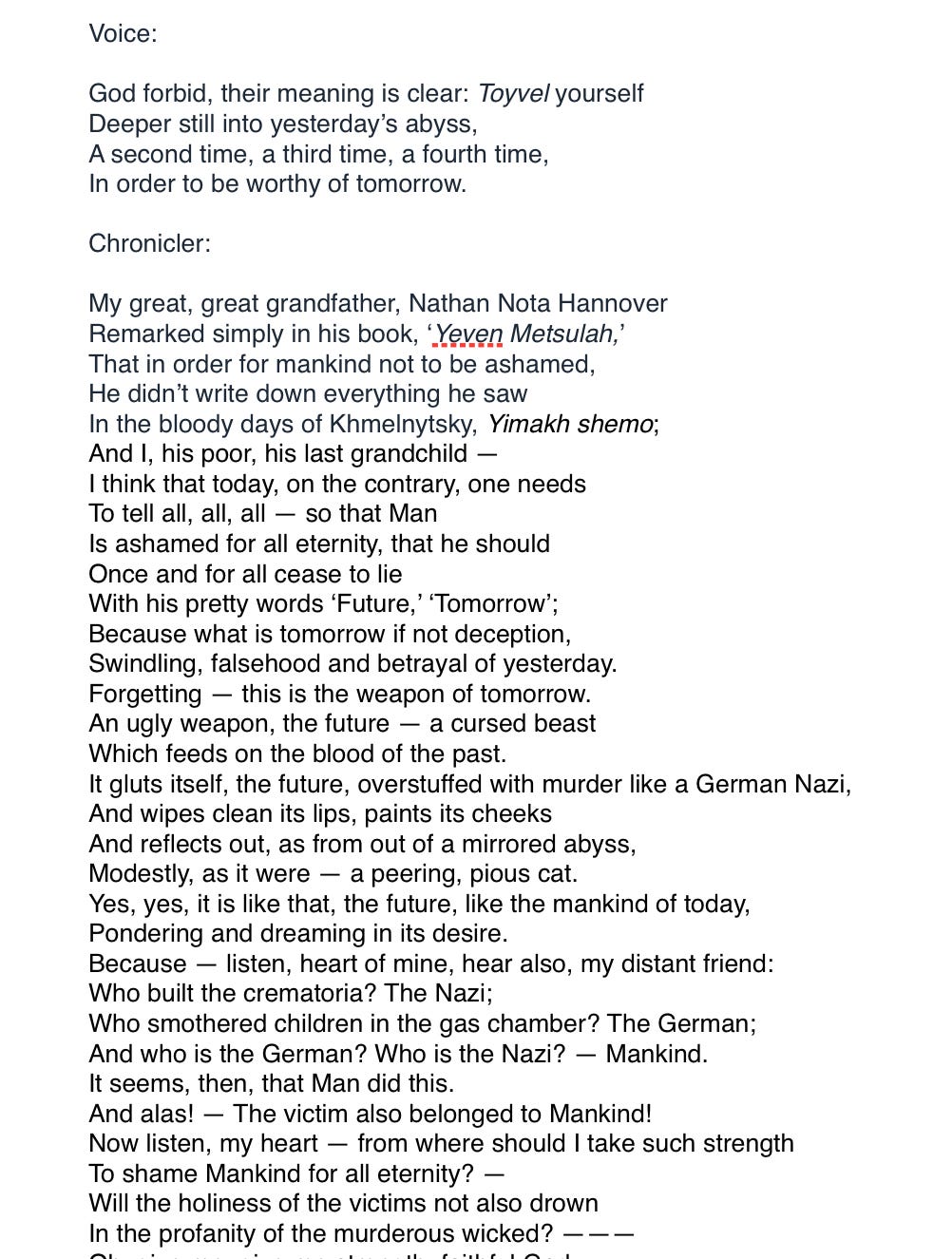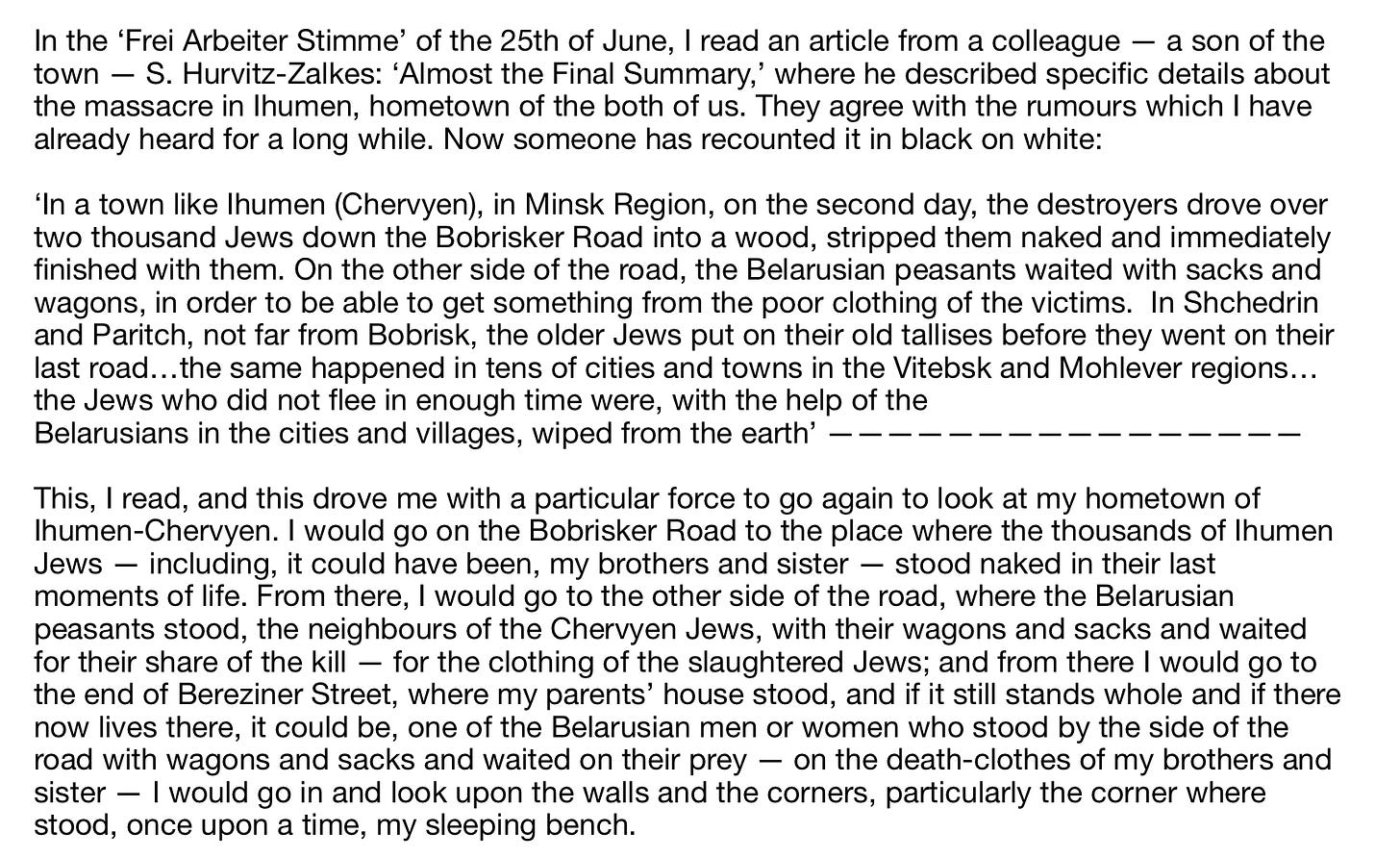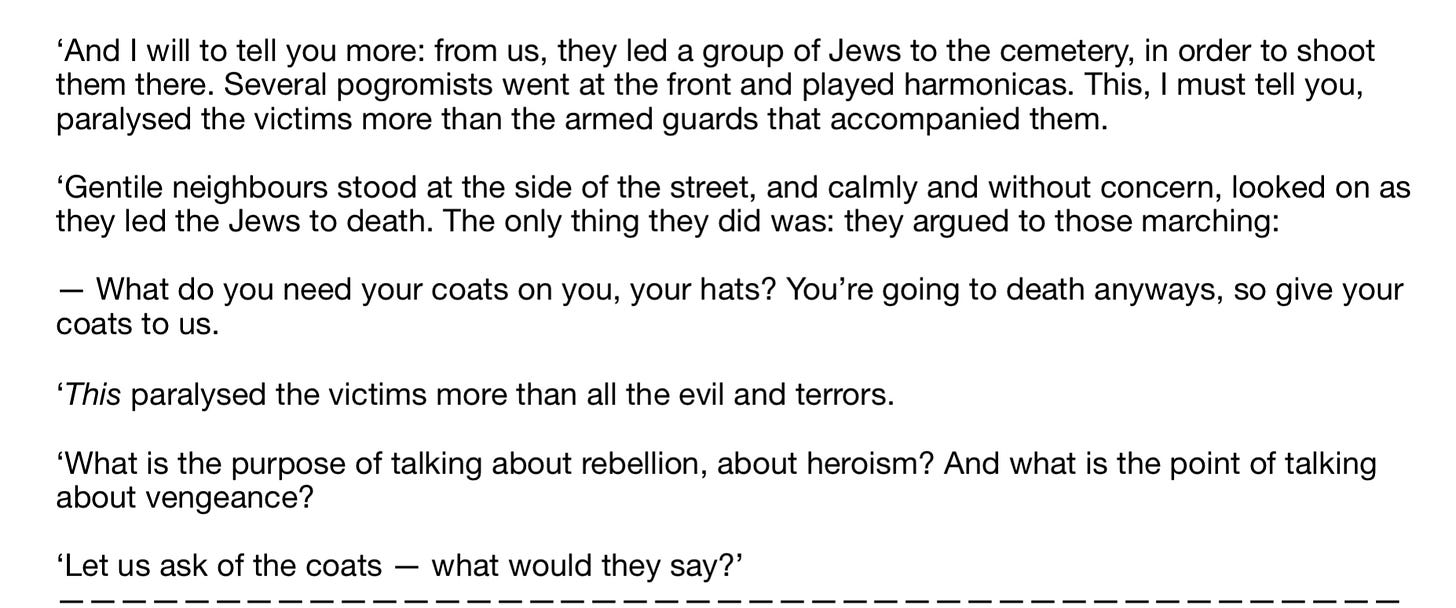To start things off with Wedding in Foehrenwald…
I’d be totally remiss if I didn’t mention that Motl Didner received the Yiddish Book Centre translation fellowship in 2013 to work on both Leivick’s Miracle in the Ghetto and Wedding in Foehrenwald, with the Folksbeine staging a reading of Miracle in 2017.
Shmuel Charney1 argues in his critical biography of H. Leivick that Miracle in the Ghetto is a bit of a misstep and shouldn’t be staged, only read. And I must admit I half-agree. Leivick seems to have doubted himself and his right to the story a bit by ‘46 when he met a leader and survivor of the Uprising in Landsberg DP Camp, Zivia Lubetkin. How, he asked, did he dare?
But now over into Wedding in Foehrenwald, which has been adapted by Ellen Perecman (as was Rags in a fairly straightforward translation, though shortened) and performed by New Worlds Theatre Project as The Displaced Wedding. I haven’t read her adaptation (or more than the Pakn Treger excerpt of Didner’s). Wedding, it seems, was initially deemed to be unstageable — though slightly unclear whether in terms of content or in a technically sense. It was, however, performed in ‘50-51 by the Folksbiene.
Miracle in the Ghetto and Wedding in Foehrenwald are, in one sense, opposites: one a play with the glaring absence of a Moshiach at its heart, and the other with the reappearance of Elijah and the Moshiach in Leivick’s drama (though only a part of the drama, not the focus)
But the two plays, though shifted in year, are also twinned, joined via a single day — The first night of Pesach — and by their single candle to be lit for the Seder. Two Seder tables which are instantly desecrated.
Time is often fluid in Leivick — Maharam of Rotenburg, where the entire premise is the fluidity of time as it shifts 13th Century Mainz and Dachau in 1944, falls between Miracle and Wedding — and in Wedding, we immediately slip from ‘49 to ‘46 to ‘44, back into the Khurbn, with a few steps from an actor and an audio cue, Sometimes, as Leivick tells us in his autobiographical In Tsarist Katorga, time is the most solid thing in the world. Sometimes, the least:
From H. Leivick’s In Tsarist Katorga, 1959.
He’s a man who knows a thing or two about time, doing it, and how it eventually carries you back to the ‘place of your cradle’ (Leivick explicitly joins womb and tomb à la Beckett in his first sonnet ring, c1922)
Here I must mention Wedding in Foehrenwald’s talking clock.
Because — talking clock! Which recalls the ‘angry’ clock of Leivick’s melamed, Shimon Leyb, mentioned in ‘Clouds Behind Woods,’ (Naye Lider, 1932) by the apparition of his younger self in prison.
From H. Leivick’s Naye Lider, 1932.
Time, it seems, will also be a major concern of Wedding in Foehrenwald. Time running out, time gone by, making up for lost time, as well as the future — are ‘tomorrow’ and ‘future’ as our guide, the Chronicler, suggests, just a beautiful lie?
From H. Leivick’s Wedding in Foehrenwald, 1949, Scene One.
This isn’t the first time inanimate objects talk in Leivick. See, for example, ‘the Sick Room’ or ‘The Weeping from All Houses’ in Keynems Land, (1923) where a whole apartment full of furniture has something to say and wishes to leave with a certain paper-hanger…
But there’s another clock which might have some bearing on this talking clock which goes mad, swinging wildly out of control — a real one found in Israel Efros’s book about the World Jewish Congress delegation’s time in Munich, Homeless Jews,2 where he and Leivick shared a room in UNRRA quarters. This clock, ‘Hersh Ostropol’s clock,’ as Efros terms it, does nothing so mundane as keep the time. It’s hands are broken, it’s chiming deranged:
From Israel Efros’s Homeless Jews: A Visit to the Jewish Camps in Germany, 1947. Incidentally, from the same publishing series that eventually produces And the World Remained Silent, by Elie Wiesel. Which would eventually become Night.
Young Itzik’s toys also speak: they’re the first three animals of ‘Chad Gadya,’ in fact — a little goat, a cat and a dog. The clock warns of something coming…and the little animals pledge their friendship, their love and protection to the boy.
Wedding in Foehrenwald, Scene Two.
Spoilers: It doesn’t help. The Germans come. The dog and the cat turn on the goat. Each other. The boy goes to Dachau. Elijah enters and stops the clock’s pendulum: a funereal act. This is the time and place where the life of this family ends.
And time is also, thus, suspended for everyone… pA lacuna, a discontinuity. A broken circle. Until we meet the cast again in scene three, two-ish years later.
There’s a definite connection here to one of Leivick’s poems from I Was Not in Treblinka (1945), where Elijah visits a house he knows to be Jewish on Pesach (‘Seder Night, 1944, in the Warsaw Ghetto’)…only to find the new German occupant. This is roughly replicated here, in something that, as much as it wants to tell this war-time story, presents one that seems to have one foot in the tale from Tsarisher Katorge where one cellmate ate the Shabbos meal of the family he had just murdered.
Material drawn directly from With the Surviving Remnant makes an early appearance in Wedding in Foehrenwald — It is, in fact, an avatar of Leivick himself who opens the play, existing within its world and talking about a trip like the one he had made: The Poet.
Charney pinpoints the genesis of the play itself to Leivick and company being shown the silk wedding dresses made for the brides of Foehrenwald.
From H. Leivick, With the Surviving Remnant, 1947, a book collecting his articles about the Jewish a world Congress delegation to the DP camps for Der Tog.
We descend from this framing device into a second — ‘The Poet’ summons the ‘Chronicler’ who seems to be telling us the story…and who stumbles over a dead body and flees. Elijah then resurrects the body by accident (it refuses to be stilled again and walks off) in the earlier section of the play — 1944.
The Chronicler will be our eyes and ears — and is the one who can move us, the audience, back in time and into his visionary ‘trance’ — he sees what others cannot. But this handover from the ‘Poet’ to the ‘Chronicler’ is a problematic one.
It reminds us, of course, with authorial intrusion and a musical cue, that we are seeing a fiction — is it not a pageant of sorts imploring American Jews not to forget their sisters and brothers in the DP camps, like We Will Never Die in 1943.
But then, immediately afterward, Wedding claims to be a true story.
There is a rough pretence made of handing the story over to the survivors themselves to tell: The memory of Leivick’s meeting Zivia Lubetkin and the idea of who has the right to tell which story and how certainly cannot be ignored.
But in the end, this consideration is only paid the briefest of lip-service. The Chronicler is as much Leivick as the Poet is. Perhaps more so — Leivick certainly isn’t unaware and uninterested in his own place in the continuity of Jewish history and literature, and the weight which his name carries. And it finds an echo in the Chronicler’s own awareness of his journalistic ‘yichus.’
Is Wedding in Foehrenwald which, as we will see, takes some quotes straight from the people Leivick was speaking to in 1946 in Germany, appropriative? Does is become appropriation when it leaves the realm of reportage and enters fiction? Or is it, as Charney argues with respect to the danger of staging Miracle in the Ghetto, back to being an artist’s reaction to events (rather than, as he believes, attempted simulacrum, like Miracle) which gives it at least a veneer of propriety and honesty?
One can also compare the Chronicler with Armilus of The Redemption Comedy, the prophet who can only see which way the wind is blowing and change his face accordingly — how much he actively guides the course of events while protesting it’s only the order of things is up for debate. Does the very act of describing or recording — or claiming to foresee — events alter them?
Certainly With the Surviving Remnant influences the play. Avrom’s desire to go with his wife and child — and inability to do so — reflects a ‘fact’ which Leivick asserts in Surviving Remnant, that it was largely mothers who went with their children to death while the guilty fathers remained (a theme, it seems, in the poems he was being given by survivors). His meeting with Dr Boris Pliskin perhaps, figures here, too, with Pliskin’s second child, with his second wife, bearing the same name as his murdered eldest (Wedding supplies us — and Avrom — with a Sore the second and an Itzik the second):
From With the Surviving Remnant.
The character of the ‘Unknown Jew’ also seem to have his origin in Surviving Remnant, when Leivick and Efros discover a memorial in Leipheim dedicated to the memory of the ‘Unknown Jew’ and decide that they like this premise: a monument to those who have none and might never have any other.
I am thinking how one would stage the second scene of this, in fact, with its talking clock and animals and with it’s…condensed?…portrayal of events. The German family, neighbours, who will replace Avrom’s family is brought in by the stormtroopers who take the Jewish family away. They are directly handed the family’s clothing. They’re called Fritz, Gretchen and Brunhilde and speak in a Germanised sort of Yiddish (we add ‘-chen’ to everything and say ‘Jude,’ ‘jawohl’ and ‘danke’ a lot.)
Is shorthand? Is it just clumsy, heavy-handed, the way they proclaim things, tear off a coat and put it on themselves, lay their own wine, ham and bread on the Seder table? Leivick is hardly the most subtle of writers on the whole, but I think it’s more than that.
Perhaps scene two belongs more to the realm of dream/memory? Or, because we have also just seen a dead man (and he is rather spectacularly dead by stage directions) get up and walk away….do we just accept that we are now seeing visions, sometimes reduced to the near absurd, sometimes able to see further, deeper, the invisible rendered solid?
Or is it a parable-like play, acted out by paper cut outs, mere symbols and caricatures: Avrom, Sore and Itzik, the original Jewish family. Fritz, Gretchen and Brunhilde, a group of stormtroopers, a set of cartoon Germans. And the implied story of ‘Chad Gadya’ — itself a symbolic retelling of Jewish history and belief — points us to look at the scene this way: a series of barely animated tableaux, perhaps reminiscent, say, of Lissitzky‘s illustrations for ‘Chad Gadya.’ Frozen frames of stylised horror, strung together to provide exposition for what is to come…
From Lissitsky’s Chad Gadya.
But in this stagey, slightly surreal scene, perhaps amplified by the young boy’s fever (Leivick also uses fever as a literary device to shift between time frames in In Tsarist Katorga) where the toy animals reenact the human events, there’s also an element of what Leivick, by 1949, knew about his own family — that the neighbours had stood and waited for the clothes of the Jewish Ihumeners as they stripped —
From H. Leivick, Essays and Speeches, 1963, originally for Der Tog.
— as well as the stories from Surviving Remnant about people being asked for their coats as they were marched off:
From With the Surviving Remnant.
Leivick says elsewhere that it’s not very good art just to pour oneself out on the page without shaping it, without holding something back. Perhaps this is a way to continue to speak about the knowledge/experience obliquely — as he has previously quoted his fellow Ihumener about events in his home town as a means into the subject.
(To be Continued…)
A small note: The excerpts of translation here are my own, largely unpolished, very literal efforts and may (and likely do) contain errors. I’ve produced rough English drafts for the Yiddish books mentioned, for ease of citation. I do not hold translation rights for these works and the excerpts have been provided for clarification and support of points, as the texts are not currently widely obtainable in official English translation. If you do hold the rights and wish them removed, please let me know!
NB: I don’t use his pen-name unless quoting directly from a contemporary, and use ‘Leivick’ rather than ‘Leyvik,’ as it seems to be the English spelling he employed himself, regardless of YIVO transliteration standards.
I find Efros’s account to be an almost essential companion to Leivick’s. There are events which appear in one, but not the other (such as the 14 Iyar commemoration) or which do appear in both, with their individual assessment of a situation becoming clear by the contrast.




